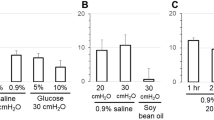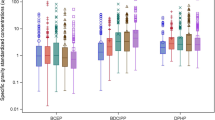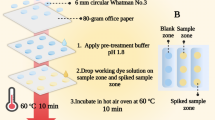Abstract
Summary: In 18-one-day-old anesthetized piglets, the effects of 1-deamino-8-D-arginine-vasopressin (DDAVP) with and without administration of dibutyryl adenosine 3′:5′-monophosphate (DBcAMP) upon the urinary concentrating system were studied. Supramaximal doses of 20 μg DDAVP per kg body weight did not affect fractional water and fractional urea excretion, urinary flow rate, and relative urinary osmolarity. The same dose combined with DBcAMP (0.2 mg/kg body weight per min) changed these parameters significantly. This increase in the responsiveness of the urinary concentrating system to DDAVP by DBcAMP was paralleled by a significant increase in urinary and plasma cyclic adenosine 3′:5′-monophosphate concentration and a tremendous increase in the medullary cyclic adenosine 3′:5′-monophosphate content (2.5 × 105 pmoles/g medulla) as compared to the controls (6.4 × 102 pmoles/g medulla) and the animals which received DDAVP without DBcAMP (8.0 × 102 pmoles/g medulla). To exclude the possibility that the increased medullary cyclic adenosine 3′:5′-monophosphate production might be caused by degradation of the dibutyryl derivative, in vitro studies with [3H]DBcAMP were performed. Incubation of labeled DBcAMP with a renal medulla homogenate of a 1-day-old piglet for 30, 60, and 90 min did not decrease the amount of [3H]DBcAMP.
Speculation: The reduced accumulation of cyclic adenosine 3′:5′-monophos-phate in response to antidiuretic hormone within the renal collecting duct cells seems to be an important reason for the reduced concentrating capacity of the neonatal kidney.
Similar content being viewed by others
Log in or create a free account to read this content
Gain free access to this article, as well as selected content from this journal and more on nature.com
or
Author information
Authors and Affiliations
Rights and permissions
About this article
Cite this article
Joppich, R., Schrader, J. & Häberle, D. Effect of Antidiuretic Hormone and Dibutyryl cAMP upon the Urinary Concentrating Capacity in Neonatal Piglets. Pediatr Res 14, 1234–1237 (1980). https://doi.org/10.1203/00006450-198011000-00017
Issue date:
DOI: https://doi.org/10.1203/00006450-198011000-00017
Keywords
This article is cited by
-
Developmental changes in renal tubular transport—an overview
Pediatric Nephrology (2015)
-
Renal blood flow control by tubuloglomerular feedback (TGF) in normal and spontaneously hypertensive rats — a role for dopamine and adenosine
Klinische Wochenschrift (1991)



